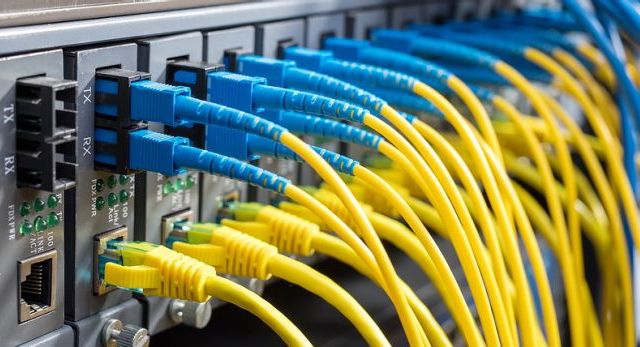Despite the rise of wireless technology, structured cabling systems are expected to witness high demand as the connective tissue that brings modern networks to future, not only fast but securely.
Though wireless technologies have emerged to gain immense popularity, data centers and the IT & telecommunication industry, among many other industrial areas, are largely attributed for the growing demand for structured cabling solutions.
A recent study by Fact.MR projects that the IT & telecommunication industry will account for nearly 43 percent revenue share of the global structured cabling market through 2031. Data center and IT & telecom industry are expected to record a collective share of over 85 percent in the global structured cabling market, projects the study.
Here are the top four reasons why the IT & telecommunication industry is largely driven towards structured cabling even in the world of wireless.
#1 IT & Telecommunication Industry: From “Go Digital” to “Grow Digital”
The digital revolution in the modern IT & telecommunications industry has taken a new leap with its transition from implementing digitization to expanding digitalization efforts across multiple business units. One of the primary factors to drive the change is that channels, content, customers, and competitors of IT & telecommunication companies are predominantly going digital.
Especially with the global workforce shifting to a ‘work from home’ regime, the IT & telecommunication sector is witnessing a growing need for additional data centers capacities. Structured cabling is expected to eliminate the existing chaos created by fiber optic and copper cable products bombarded on businesses’ current IT infrastructures in data centers.
Structured cabling can bolster their digital transformation efforts by offering a physical infrastructure to various components, such as connectivity hardware, patch panels, and associated cabling components of fiber optic structured cabling systems. This can also make implementation of the latest networking technologies smoother, which is one of the primary reasons why most businesses are moving to adopting structured cabling solutions in their existing IT infrastructures.
#2 Proliferation of Internet of Things is Why Cables Will Continue to Evolve
Industrial revolution 4.0 is growing worldwide. IT & telecommunication companies across developed as well as developing countries are exposed to the evolution of the Internet of Things (IoT) technology and its potential benefits in boosting productivity and profitability in business.
Developed regions such as North America and European Union are witnessing massive adoption of IoT. The European Union currently accounts for almost one-fourth of the global IoT spending, and it is expected to surpass the EUR 891 billion mark by 2022, projects the International Data Corporation (IDC). Not only developed, but developing countries such as India and China are reflecting similar trends. By 2025, India is projected to spend more than US$ 1 billion on IoT implementation, according to the Federation of Indian Chambers of Commerce & Industry (FICCI), in India.
With the rapid outburst of IoT adoption, the traditional point-to-point cabling system will soon become obsolete. The rising growth of the ‘more devices, fewer wires’ trend is expected to intensify the need for structured cabling in IoT systems to eliminate tangled wires and boost the data transfer rates to a new high.
#3 Structured Cabling for Lower Risk of Downtime and Higher Cost Efficiency
IT & telecommunication businesses are known to have massive burdens of managing complex IT and communication infrastructures. Wire and cable management is an inevitable part of IT infrastructure management, and this attracts newer and more frequent advancements in cabling solutions, now more than ever.
Most businesses are turning to structured cabling systems mainly for their cost effectiveness. Their simple and organized cabling structure can largely cut down the power and maintenance cost for businesses, while it helps mitigating the cost of locating and rectifying. Businesses are also identifying structured cabling systems with the flexibility of their layouts that support emerging telecom technologies, which makes digital transitions smoother and cost-effective.
Furthermore, reduced downtime is one of the biggest advantages for businesses of implementing structured cabling solutions. Their traditional variants constantly run the risk of the human error of someone accidently pulling the wrong cable, leading to a huge downtime in networks. Such downtimes do not only lead to loss of productivity and time but may also result in the loss of valuable data worth a fortune.
#4 Structured Cabling to Stay Relevant in the Age of Wireless Technology
In the ‘Information Age’, almost every IT infrastructure consists of more devices, fewer wires, and shorter runs. However, we are slowly moving towards a ‘Wireless Revolution’, which is likely to cater to the modern needs of IT & telecommunication businesses for more data bandwidths. Attractive benefits of wireless technology is only expected to bolster developments that will lead to even larger adoption across most industrial areas, and it is commonly predicted to have a huge impact on the cable management space.
However, security issues are among the biggest downturn of wireless technology which restricts its commercial potential. From a business standpoint, most companies are still inclined towards structured cabling systems that have for years, proven to be one of the safest, customizable, and most organized solutions for transmitting exclusive business information.
In the coming years, businesses are expected to appreciate structured cabling options from the safety point of view over the mere convenience of wireless technology. This makes it safe to conclude with the opinion – structured cabling is not going anywhere.
By Shambhu Nath Jha, senior research consultant
These insights are based on a report on Structured Cabling Market by Fact.MR

